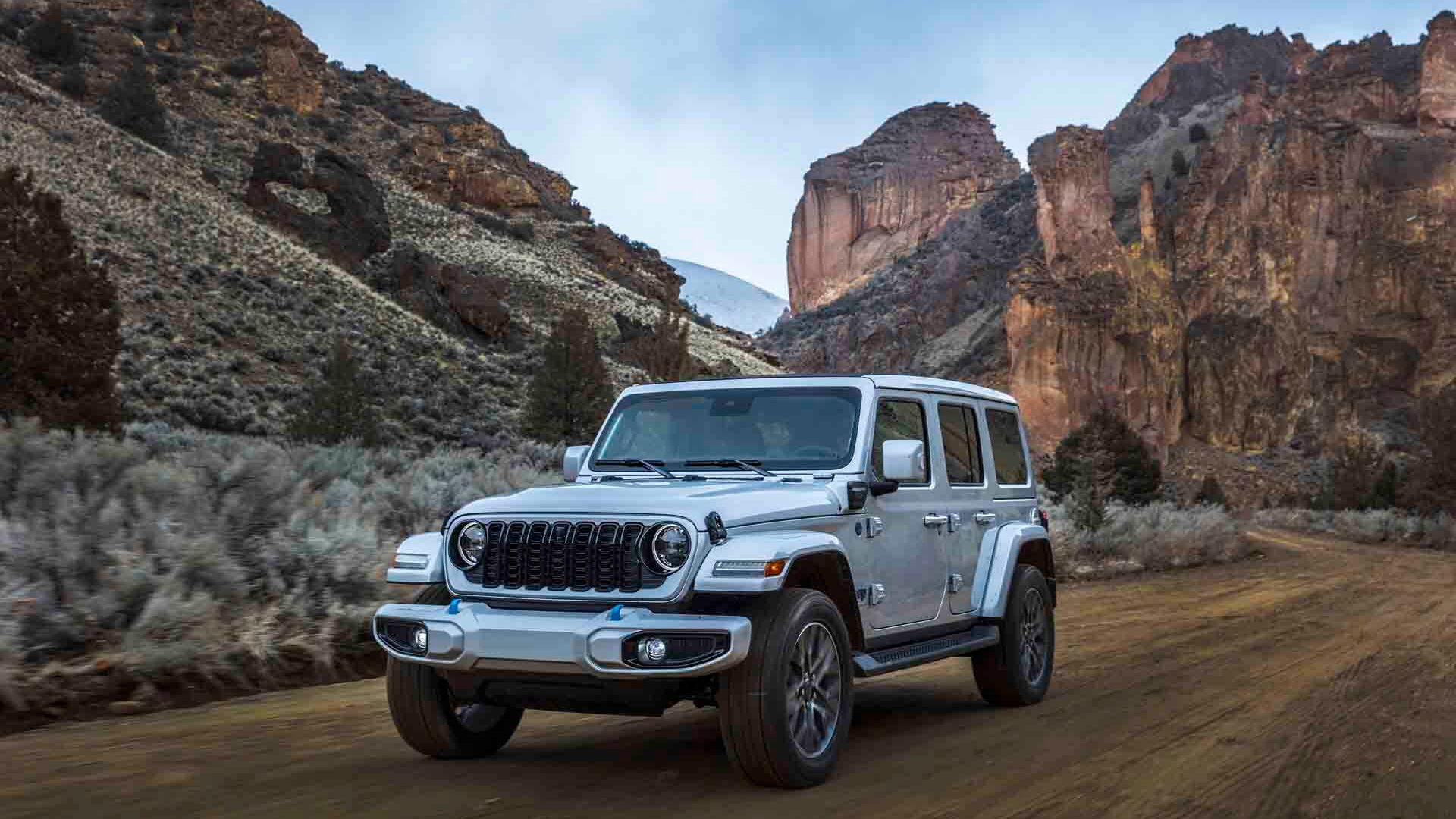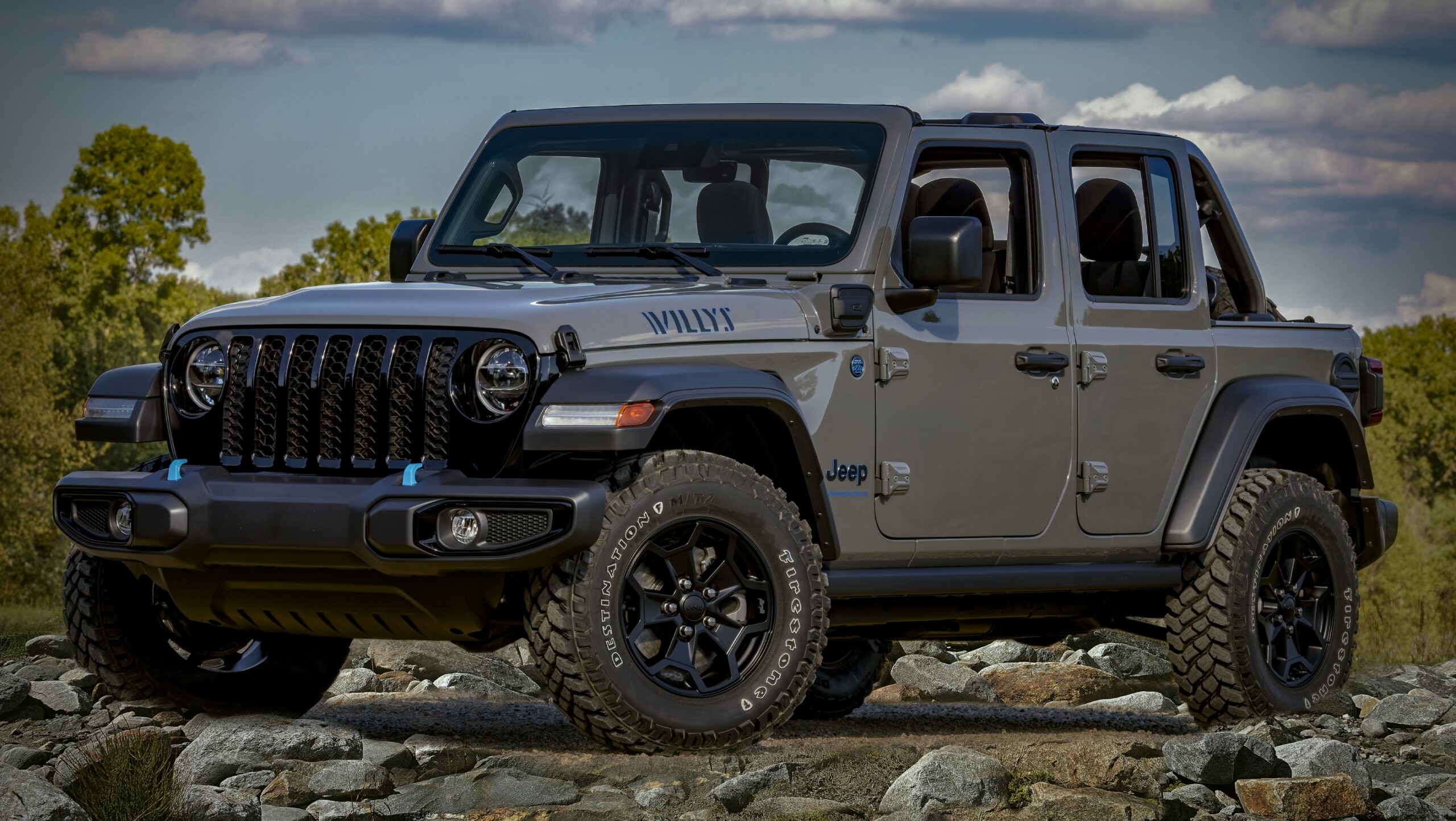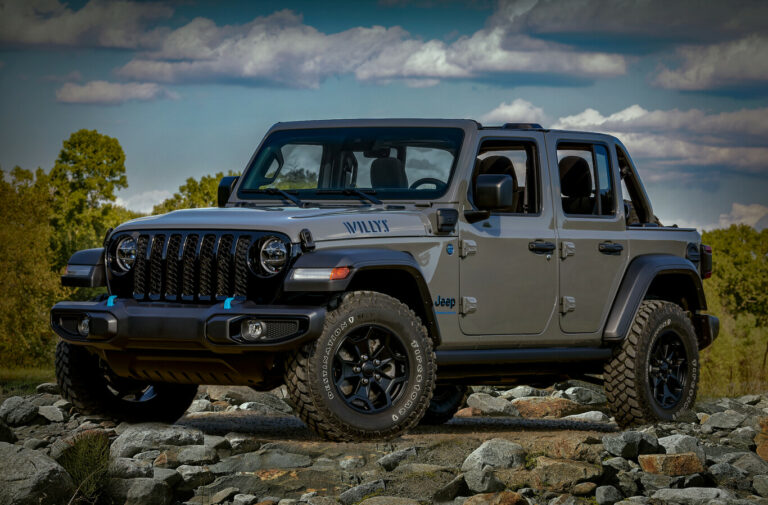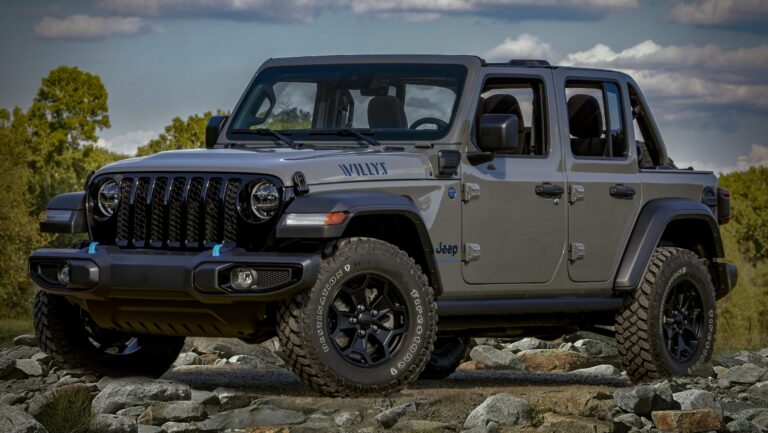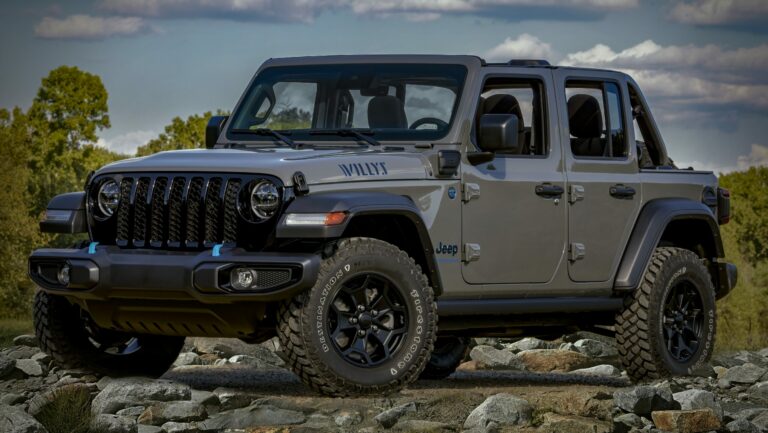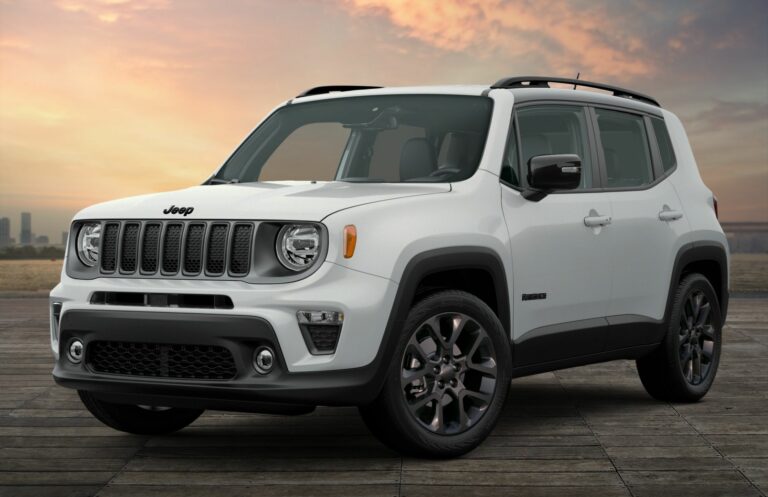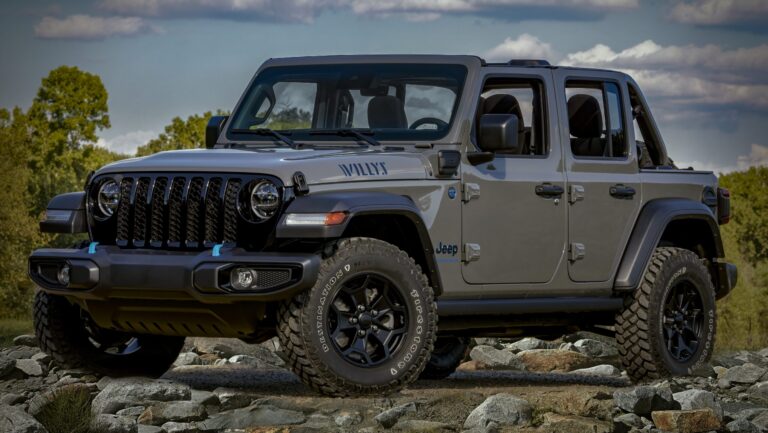Jeep Wrangler 2 Door With 33 Inch Tires: The Ultimate Guide to the Perfect Balance
Jeep Wrangler 2 Door With 33 Inch Tires: The Ultimate Guide to the Perfect Balance jeeps.truckstrend.com
Introduction
The Jeep Wrangler stands as an enduring icon of adventure, freedom, and unparalleled off-road capability. Among its many configurations, the 2-door model holds a special place, revered for its classic proportions, nimble handling, and pure, unadulterated Jeep spirit. When this legendary vehicle is paired with 33-inch tires, it transforms into what many enthusiasts consider the "sweet spot" of off-road prowess and daily drivability. This combination strikes an exceptional balance, offering significantly enhanced performance and aesthetics without the extensive modifications or compromises often associated with larger tire setups. This comprehensive guide will delve into every facet of the 2-door Jeep Wrangler equipped with 33-inch tires, exploring its benefits, necessary considerations, and what makes it such a compelling choice for both seasoned off-roaders and aspiring adventurers.
Jeep Wrangler 2 Door With 33 Inch Tires: The Ultimate Guide to the Perfect Balance
The Allure of the 2-Door Wrangler
The 2-door Jeep Wrangler, whether a JK, JL, or even a vintage CJ/YJ/TJ, embodies the very essence of the brand. Its shorter wheelbase is its defining characteristic, offering superior break-over angles and unmatched maneuverability on tight trails, through rock gardens, and over challenging obstacles. This agility allows the 2-door Wrangler to navigate terrain where longer vehicles might get hung up or require multiple-point turns. Beyond its functional advantages, the 2-door model retains the timeless, rugged aesthetic that first captivated the public, making it a favorite for those who appreciate its historical lineage and minimalist design. It’s a testament to focused capability, shedding excess for pure, unadulterated off-road performance.
Understanding 33-Inch Tires: What They Mean for Your Jeep
When we talk about "33-inch tires," we are referring to the approximate overall diameter of the tire. Stock Jeep Wranglers typically come with tires ranging from 29 to 32 inches in diameter, depending on the trim level (e.g., Sport, Sahara, Rubicon). Upgrading to 33-inch tires provides several immediate and noticeable benefits:
- Improved Ground Clearance: A larger tire diameter directly translates to more clearance under the axles and differentials, reducing the likelihood of getting hung up on rocks, logs, or other trail impediments.
- Enhanced Traction: Larger tires, especially those designed for off-road use, typically have a larger contact patch and more aggressive tread patterns, significantly improving grip on loose surfaces, mud, snow, and rocks.
- Aggressive Aesthetic: Aesthetically, 33-inch tires fill out the wheel wells much better than stock tires, giving the Wrangler a more robust, purposeful, and aggressive stance that aligns with its off-road DNA.
- Better Approach/Departure Angles: While not as significant as a lift, larger tires subtly contribute to improved approach and departure angles by raising the entire vehicle.
![]()
Why 33-Inch Tires are the "Sweet Spot" for 2-Door Wranglers
The synergy between the 2-door Wrangler and 33-inch tires is widely considered ideal for several compelling reasons:
- Minimal Modification Required: Unlike larger tires (35-inch, 37-inch, or more) that often necessitate extensive modifications like significant lift kits, reinforced axles, and heavy-duty steering components, 33-inch tires can often be accommodated with a relatively modest 2-2.5 inch suspension lift. In some cases, a stock Rubicon model with its higher fender flares and factory lift can even run 33s with minimal to no rubbing, though a small lift is always recommended for optimal off-road articulation.
- Balanced Performance: This setup offers a significant boost in off-road capability without severely compromising on-road manners. The impact on fuel economy, braking performance, and steering feel is generally manageable compared to larger, heavier tire setups.
- Optimal Gearing: Many stock Jeep Wrangler gear ratios (e.g., 3.73 or 4.10, common in Rubicon models) are quite compatible with 33-inch tires. While re-gearing can optimize performance, it’s often not strictly necessary for daily driving and moderate off-roading, especially with automatic transmissions.
- Maintains Articulation: A well-chosen 2-2.5 inch lift combined with 33-inch tires allows for excellent suspension articulation without excessive tire rubbing against fenders or inner fender liners, even during extreme flex on the trail.

Necessary Modifications and Considerations for 33-Inch Tires
While 33-inch tires are relatively easy to fit, some key modifications and considerations will ensure optimal performance, safety, and longevity:
- Lift Kit: A 2-2.5 inch suspension lift is highly recommended. This can range from budget-friendly spacer lifts (coil spacers) to more comprehensive coil spring lifts or full short-arm suspension systems. The type of lift depends on your budget and desired off-road performance. A quality coil lift will improve ride quality and articulation over a simple spacer lift.
- Wheel Backspacing: This is critical for preventing tire rubbing, especially on the inner fender wells, control arms, and sway bar links. Aftermarket wheels with 4.5 to 5.0 inches of backspacing are generally ideal. If using stock wheels, wheel spacers may be necessary to achieve proper clearance, but always opt for hub-centric spacers from reputable brands.
- Fender Clearance: While 33s typically fit well with a modest lift, aggressive off-road use involving significant suspension compression and articulation might lead to minor rubbing on the factory fender flares. Solutions include minor fender trimming, flat fender flares, or high-clearance aftermarket fenders.
- Gearing: For optimal power, acceleration, and fuel economy, especially if you have a manual transmission or a lower stock gear ratio (like 3.21), consider re-gearing. While not always mandatory for 33s, it restores the engine’s RPMs to their intended range, reducing strain on the drivetrain and improving overall drivability, especially on highways or when tackling steep inclines. For most modern Wranglers with 3.73 or 4.10 gears, 33s are perfectly manageable.
- Tire Carrier: The weight of a 33-inch spare tire, especially a heavier Mud-Terrain, can put excessive stress on the factory tailgate-mounted tire carrier, potentially leading to tailgate sag or damage over time. An aftermarket rear bumper with an integrated tire carrier or a reinforced tailgate hinge kit is a wise investment for long-term durability.
- Speedometer Calibration: Crucial for accurate speed readings, odometer mileage, and correct transmission shift points (for automatics). Changing tire size affects these readings, and a simple calibration device (e.g., AEV ProCal, Superchips Flashcal) can easily correct it.
Choosing the Right 33-Inch Tires
The market offers a vast array of 33-inch tires, each designed for specific purposes:
- All-Terrain (AT) Tires: Excellent all-rounders, offering a good balance of off-road traction, on-road comfort, and relatively quiet operation. Ideal for daily drivers who frequently venture off-road.
- Mud-Terrain (MT) Tires: Feature aggressive, widely spaced tread blocks for maximum traction in mud, rocks, and loose dirt. They are generally noisier on the road and wear faster but excel in extreme off-road conditions.
- Hybrid Tires: A newer category that blends characteristics of AT and MT tires, offering aggressive looks and good off-road performance with better on-road manners than traditional MTs.
Consider the tire’s Load Rating (C, D, E) as well; lighter C-rated tires often provide a more comfortable ride on lighter vehicles like the 2-door Wrangler, while E-rated tires are overkill and will feel very stiff. Research reputable brands like BFGoodrich, Goodyear, Nitto, Toyo, Cooper, and Falken.
Driving Experience: On-Road and Off-Road Performance
The 2-door Wrangler with 33-inch tires offers a distinct driving experience:
- On-Road: You’ll notice a slightly taller stance and potentially a minor increase in road noise, depending on the tire’s aggressiveness. Fuel economy will see a slight decrease (typically 1-3 MPG), and braking distances might increase marginally due to the larger rotating mass. However, the overall drivability remains very good, often feeling more stable than stock due to the wider track provided by aftermarket wheels.
- Off-Road: This is where the setup truly shines. The improved ground clearance, enhanced traction, and the inherent agility of the short wheelbase combine to create an incredibly capable off-road machine. It will crawl over obstacles with greater ease, navigate tight trails effortlessly, and inspire confidence in challenging terrain.
Maintenance and Care for Your Upgraded Wrangler
To ensure your upgraded Wrangler performs optimally and safely, regular maintenance is key:
- Tire Rotation and Pressure: Rotate tires every 5,000-7,000 miles to ensure even wear. Maintain proper tire pressure (usually lower than stock for comfort and optimal contact patch, but consult tire manufacturer recommendations).
- Suspension Checks: Regularly inspect all suspension components (shocks, springs, control arms, bushings, steering linkages) for wear, damage, or loose bolts, especially after aggressive off-roading.
- Alignment: After installing a lift kit, a professional alignment is crucial to correct camber, caster, and toe settings, preventing uneven tire wear and ensuring proper steering. Re-check alignment periodically.
Practical Advice and Actionable Insights
- Research Thoroughly: Before making any purchases, research specific tire models, lift kits, and wheel options. Read reviews and consult forums.
- Buy Quality Components: Don’t skimp on critical components like tires, wheels, and lift kits. Quality parts ensure safety, durability, and better performance.
- Professional Installation vs. DIY: While many modifications can be done by a competent DIY mechanic, consider professional installation for lift kits, re-gearing, or if you’re unsure.
- Calibrate Your Speedometer: This is often overlooked but essential for accurate vehicle performance and legal compliance.
- Consider a "Build Plan": Think about your long-term goals. If you envision larger tires in the future, plan your initial modifications accordingly to avoid redundant purchases.
Price Table: Estimating the Cost of a 2-Door Jeep Wrangler with 33-Inch Tires
Please note that these are estimated price ranges and can vary significantly based on the specific model year, trim level, vehicle condition (new vs. used), brand of parts, location, and labor costs. Prices are in USD.
| Item/Category | Description | Estimated Price Range (USD) | Notes/Considerations |
|---|---|---|---|
| Base Vehicle | 2-Door Jeep Wrangler (JL/JK, used) | $20,000 – $45,000+ | Price varies wildly by year, mileage, trim (Sport, Sahara, Rubicon), and condition. New JL Wranglers start around $32,000 for a Sport. |
| 33-Inch Tires | Set of 5 (4 on vehicle + 1 spare) | $1,200 – $2,500+ | Price depends on tire type (AT, MT, Hybrid), brand, and load rating. Expect higher costs for premium brands or aggressive MTs. |
| Lift Kit (2-2.5") | Suspension lift for tire clearance & performance | $300 – $1,500+ | Budget Boost (Spacers): $300-$600. Coil Spring Lift: $600-$1,000. Full Suspension Kit (basic): $1,000-$1,500+. Higher-end kits with new shocks, control arms, etc., can be much more. |
| Aftermarket Wheels | Set of 5 (for proper backspacing) | $800 – $2,000+ | Price varies by brand, material (steel vs. aluminum), and design. Often required for proper clearance with 33s. |
| Speedometer Calibrator | Corrects speedometer/odometer for new tire size | $150 – $250 | Essential for accurate readings and optimal transmission shifting. |
| Aftermarket Tire Carrier | Reinforced carrier for heavy spare tire | $300 – $1,000+ | Recommended to prevent tailgate damage. Can be integrated with a new rear bumper or a hinge reinforcement kit. |
| Installation Costs | Professional labor for lift, tires, etc. | $400 – $1,000+ | Varies by shop rates and complexity of the lift kit. Tire mounting/balancing usually included with purchase. |
| Alignment | Post-lift suspension alignment | $100 – $200 | Crucial after any suspension modification to ensure proper handling and tire wear. |
| Optional: Re-gearing | For optimal power and fuel economy (if needed) | $1,500 – $3,000+ | Highly recommended for manual transmissions or if you have 3.21 gears. Includes parts (ring & pinion) and labor for front and rear axles. |
| Total Estimated Upgrade Cost (Excluding Base Vehicle) | $3,250 – $8,500+ | This range represents the cost for tires, wheels, lift, and basic necessities. Re-gearing would add significantly. |
Frequently Asked Questions (FAQ)
Q1: Do 33-inch tires fit a stock 2-door Jeep Wrangler without any lift?
A1: Generally, no, not without rubbing. While some stock Rubicon models with their higher fender flares might fit 33s for street driving, a 2-2.5 inch lift is highly recommended for all models to prevent rubbing, especially during off-road articulation or full steering lock.
Q2: What size lift do I need for 33-inch tires on a 2-door Wrangler?
A2: A 2-2.5 inch suspension lift is the most common and effective size for clearing 33-inch tires on a 2-door Wrangler, providing a good balance of tire clearance and maintaining a relatively low center of gravity.
Q3: Will 33-inch tires significantly affect my fuel economy?
A3: Yes, there will be a slight decrease in fuel economy, typically 1-3 miles per gallon (MPG). This is due to the increased weight, rolling resistance, and often more aggressive tread pattern of the larger tires.
Q4: Do I need to re-gear my Jeep for 33-inch tires?
A4: It’s not always strictly necessary, especially if your Wrangler has 3.73 or 4.10 stock gear ratios (common in Rubicons or with towing packages) and an automatic transmission. However, re-gearing (to 4.10 or 4.56, depending on engine/transmission) is highly recommended for optimal performance, especially with manual transmissions or if your Jeep originally came with 3.21 gears, as it restores power, improves acceleration, and reduces drivetrain strain.
Q5: Can I use my stock wheels with 33-inch tires?
A5: Possibly, but it depends on the specific stock wheel’s backspacing. Many stock wheels have too much backspacing for 33s, causing the tires to rub on suspension components or inner fender wells. Aftermarket wheels with 4.5-5.0 inches of backspacing are ideal, or you might need wheel spacers with stock wheels.
Q6: What’s the best type of 33-inch tire for a daily driver that also goes off-road?
A6: All-Terrain (AT) tires are generally the best choice for this use case. They offer a good compromise between aggressive off-road traction and comfortable, relatively quiet on-road performance, along with good tread life.
Conclusion
The 2-door Jeep Wrangler with 33-inch tires represents a harmonious marriage of form and function. This popular setup enhances the Wrangler’s already formidable off-road capabilities, providing increased ground clearance, improved traction, and a more aggressive stance, all while maintaining a remarkable level of daily drivability. It’s a testament to achieving significant performance gains without venturing into the realm of extreme modifications. For those seeking to unlock their Wrangler’s full potential while retaining its iconic agility and classic appeal, the 33-inch tire upgrade is undoubtedly the sweet spot, offering an unparalleled balance of adventure-ready capability and everyday enjoyment. Embrace the trail, confidently and stylishly, with your perfectly equipped 2-door Wrangler.
